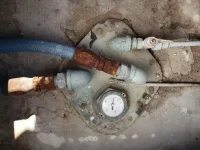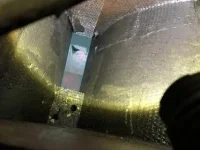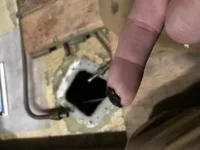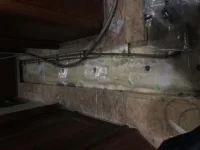ashefrin
Member
- Joined
- Oct 29, 2020
- Messages
- 17
- Status
- OWNER - I own a Hatteras Yacht
- Hatteras Model
- 50' SPORT DECK (1995 - 1997)
I recently purchased a 1980 Hatteras 53 Convertible and the previous owner left us bad fuel in the rear tank, we are trying to remove 700 gallons of contaminated fuel from the rear tank.
The Marina does not want to take apart the cover(see picture) and remove the sending unit because it has never been removed They also say that if I get the bad fuel pumped out at a cost of $8.00 per gallon they cannot guarantee that there will not be a lot of sludge in the bottom and how to get it all cleaned out is my question is how do I get all the sludge out of the tank. I am having someone from an environmental company come safely remove the old fuel but he cannot be sure if he gets all the stuff out of the bottom of the tank.
My thoughts are to drill a 2” hole to the right of this cover and then seal it up after I get the tank cleaned out. Any suggestions would be helpful……Thanks in advance
The Marina does not want to take apart the cover(see picture) and remove the sending unit because it has never been removed They also say that if I get the bad fuel pumped out at a cost of $8.00 per gallon they cannot guarantee that there will not be a lot of sludge in the bottom and how to get it all cleaned out is my question is how do I get all the sludge out of the tank. I am having someone from an environmental company come safely remove the old fuel but he cannot be sure if he gets all the stuff out of the bottom of the tank.
My thoughts are to drill a 2” hole to the right of this cover and then seal it up after I get the tank cleaned out. Any suggestions would be helpful……Thanks in advance





